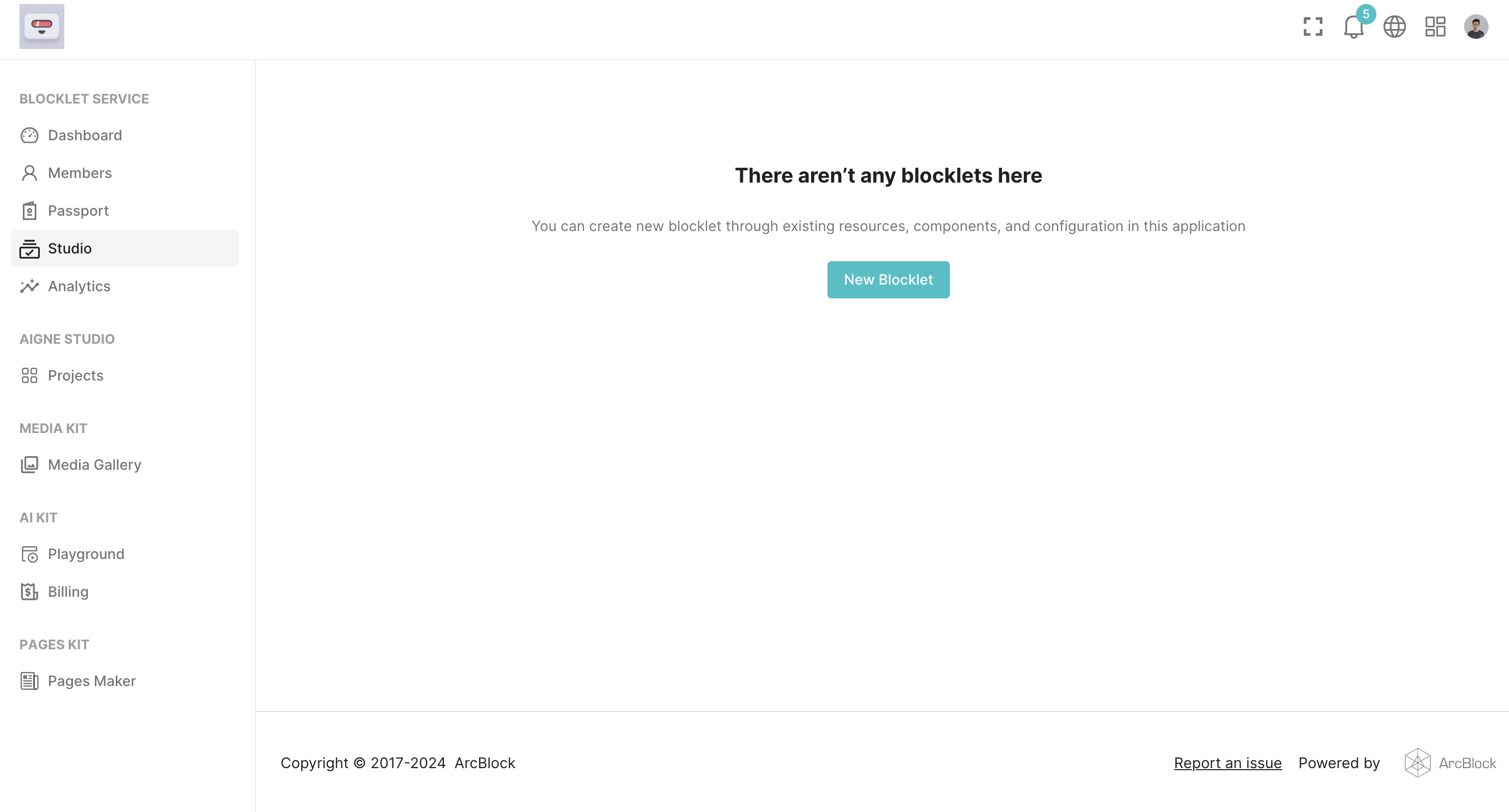Welcome
Getting Started
How to Guides
Application vs Blocklet
Create Blocklet
Compose Blocklets
Develop Blocklet
User and Passport
Communicate with DID Wallet
Blocklet Storage
Using Blocklet Preferences
Using Blocklet Logger
Add PWA Integration to Blocklet
Build blocklet for profit [deprecated]
Bundle your blocklet
Manage Blocklet Versions
Publish your blocklet to the world
Deploy your blocklet
Read/Write blockchain in blocklet
Operation your blocklet
Reference Guides
DID Connect
blocklet.yml
blocklet.js
Blocklet SDK (Node.js)
Blocklet SDK (Browser)
Blocklet Service
Blocklet CLI
Blocklet Server CLI
Blocklet UI
Blocklet GitHub Actions
Blocklet Studio
Blocklet Manager
Security
Performance
Developer Best Practices.
Known Issues or Limitations
Setup Blocklet Server
WebHooks
OAuth Server
Access Key
MCP Servers
Conceptual Guides
Frequently Asked Questions
Blocklet Studio
What is Blocklet Studio?#
Blocklet Studio is a visual building tool for Blocklets, allowing users to leverage the combinable and customizable features of Blocklets to create and publish new Blocklet instances to the Blocklet Store.
For instance, the ArcBlock.io website was constructed by combining and configuring multiple official Blocklets, transforming the entire site into a brand-new Blocklet. When users need to publish their customized Blocklets and list them on the application market for others to use, they can do so conveniently through Blocklet Studio.
Why do we need Blocklet Studio?#
The primary function of Blocklet Studio is to simplify the entire process of creating and publishing Blocklets, allowing for operation without the need for programming. Users can directly publish their valuable Blocklets resources, configurations, and combination plans, forming one or multiple new Blocklets, thereby providing value to other users and earning revenue.
How to access Blocklet Studio?#
If you are an administrator (Admin) or owner (Owner) of a Blocklet instance, you can use Blocklet Studio by accessing the Blocklet Dashboard page and opening the Studio tab, as shown below:
